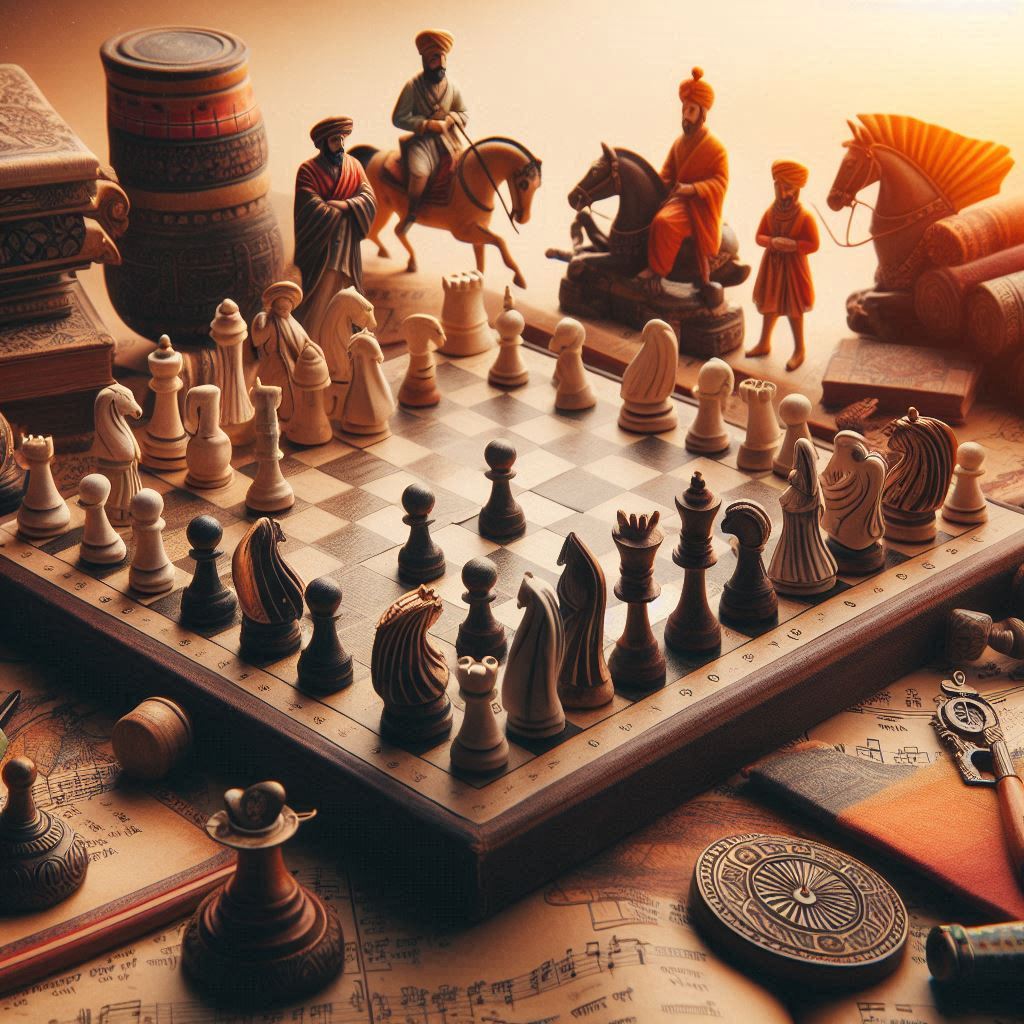Introduction
Advanced chess tactics are essential for players who aim to compete at higher levels. While basic tactics like forks, pins, and skewers are crucial for foundational play, advanced tactics involve deeper calculations, strategic sacrifices, and complex combinations. This article delves into advanced chess tactics that can enhance your competitive play, offering insights and strategies to elevate your game.
Understanding Advanced Tactics
Beyond Basic Moves
Advanced tactics move beyond the fundamental concepts, requiring a deeper understanding of positional play, strategic sacrifices, and multi-move combinations. Mastering these tactics demands not only technical skill but also an intuitive grasp of the game’s dynamics.
Key Elements of Advanced Tactics
Advanced tactics often involve elements such as unexpected sacrifices, deep calculations, and the ability to foresee your opponent’s responses several moves ahead. Developing these skills is critical for competitive success.
Positional Sacrifices
Strategic Exchange Sacrifices
Strategic sacrifices, like giving up a rook for a bishop or knight, can be powerful if they lead to a long-term positional advantage. These sacrifices are often made to open lines, weaken the opponent’s pawn structure, or control critical squares.
Sacrifices for Positional Advantage
Sacrificing material for positional gains can lead to dominating positions. For example, sacrificing a pawn to gain a powerful outpost for a knight can often be worth more than the material lost.
Complex Combinations
Multi-Move Sequences
Complex combinations involve a series of moves that force the opponent into a disadvantageous position. These sequences require precise calculation and often involve multiple threats, such as checkmate, material gain, or positional domination.
Recognizing Tactical Patterns
Recognizing recurring tactical patterns, such as the smothered mate or the Boden’s Mate, can help in spotting winning combinations. Familiarity with these patterns enhances your ability to execute complex tactics under time pressure.
Calculation Techniques
Deep Calculation Methods
Deep calculation involves looking several moves ahead, considering all possible responses from your opponent. Practice by solving complex puzzles and analyzing grandmaster games to improve this skill.
Improving Calculation Speed
Speed in calculation is vital in competitive play. Use a chess clock during practice to simulate tournament conditions and improve your ability to calculate quickly and accurately.
Prophylaxis
Preventive Moves
Prophylaxis involves making moves that prevent your opponent’s plans before they become threats. This anticipatory play can thwart your opponent’s strategy and maintain control of the game.
Understanding Opponent’s Plans
Understanding and countering your opponent’s plans is crucial. By analyzing their potential moves and intentions, you can preemptively disrupt their strategy.
Zwischenzug (Intermezzo)
Intermediate Moves
Zwischenzug, or intermediate moves, involve inserting a surprising move in the middle of an expected sequence. This tactic can force your opponent into a disadvantageous position or disrupt their calculations.
Using Zwischenzug Effectively
To use Zwischenzug effectively, look for opportunities where an unexpected move can change the dynamic of the game. This requires keen observation and creative thinking.
Decoy and Deflection
Luring Pieces into Traps
Decoy tactics involve luring an opponent’s piece to a vulnerable square. For example, offering a seemingly valuable piece can bait an opponent into a trap.
Diverting Opponent’s Pieces
Deflection involves diverting an opponent’s piece away from a critical square or function. This tactic is often used to remove a defender or disrupt the opponent’s coordination.
Discovered Attacks
Setting Up Discoveries
Discovered attacks occur when a piece moves away to reveal an attack by another piece. Setting up these attacks requires precise positioning and timing.
Maximizing the Impact of Discovered Attacks
Maximize the impact of discovered attacks by combining them with other threats, such as check or material gain. This makes it difficult for your opponent to defend effectively.
Double Attacks and Forks
Creating Dual Threats
Double attacks and forks involve attacking two or more pieces simultaneously. Knights are particularly effective at forking, but queens and rooks can also create double threats.
Utilizing Knights and Bishops in Forks
Knights and bishops can often create devastating forks due to their unique movement patterns. Practice identifying potential forks in various positions to improve this tactic.
Pinning and Skewering
Immobilizing Pieces
Pins and skewers immobilize opponent’s pieces, making them vulnerable. A pin occurs when a piece cannot move without exposing a more valuable piece, while a skewer targets a valuable piece first, forcing it to move and expose a lesser piece.
Effective Use of Pins and Skewers
Effective use of pins and skewers can lead to significant material gain or positional advantage. Look for opportunities to pin pieces against the king or queen and use skewers to disrupt your opponent’s defense.
Back-Rank Tactics
Exploiting the Back Rank
Back-rank tactics exploit the vulnerability of a king trapped on the back rank, often leading to checkmate. Ensure your king has escape routes to avoid falling victim to such tactics.
Avoiding Back-Rank Weaknesses
To avoid back-rank weaknesses, move pawns to create luft (space) for your king and be mindful of your opponent’s potential threats.
Endgame Tactics
Key Endgame Strategies
Endgame tactics involve precise calculation and deep understanding of endgame principles. Key strategies include king activity, pawn promotion, and using zugzwang to force your opponent into a losing position.
Common Endgame Tactics
Common endgame tactics include opposition, triangulation, and underpromotion. Mastering these tactics can turn seemingly drawn positions into victories.
Advanced Pawn Play
Passed Pawns and Promotion Tactics
Passed pawns are powerful assets in the endgame. Effective use of passed pawns can lead to promotion and material gain, often deciding the outcome of the game.
Leveraging Pawn Structure
Understanding and leveraging pawn structure is crucial. Strong pawn structures can control key squares and create long-term strategic advantages.
Psychological Tactics
Bluffing and Psychological Pressure
Psychological tactics involve applying pressure on your opponent, such as through aggressive play or bluffing. Maintaining composure and reading your opponent’s body language can also give you an edge.
Reading Your Opponent
Reading your opponent involves observing their behavior and reactions to gauge their confidence and intentions. Use this information to adjust your strategy and exploit their weaknesses.
Using Chess Engines
Enhancing Tactics with Technology
Chess engines are powerful tools for analyzing games and improving your tactics. Use engines to identify mistakes, explore alternative moves, and understand complex positions.
Analyzing Games with Engines
Regularly analyze your games with chess engines to learn from your mistakes and discover new tactical ideas. This practice enhances your understanding and application of advanced tactics.
Famous Games and Examples
Learning from Grandmasters
Studying games of grandmasters provides valuable insights into advanced tactics. Analyze classic games to see how top players execute complex strategies and tactics.
Breakdown of Iconic Tactical Plays
Break down iconic tactical plays to understand the underlying principles. Replaying these positions helps internalize advanced tactics and apply them in your games.
Training and Practice
Effective Training Methods
Effective training involves a mix of studying theory, solving tactical puzzles, and playing practice games. Consistent, focused practice is key to mastering advanced tactics.
Tactical Drills and Exercises
Tactical drills and exercises sharpen your calculation skills and pattern recognition. Regularly practice with puzzles that challenge you to find the best moves in complex positions.
Common Mistakes to Avoid
Pitfalls in Advanced Tactics
Common mistakes in advanced tactics include overextending, miscalculating sequences, and missing opponent’s counterplay. Stay vigilant and double-check your calculations to avoid these pitfalls.
Strategies to Overcome Mistakes
Learn from your mistakes by analyzing them thoroughly. Identify patterns in your errors and work on specific areas to improve. Continuous learning and adaptation are crucial for growth.
FAQs
What are some essential advanced chess tactics?
Essential advanced tactics include positional sacrifices, complex combinations, deep calculations, prophylaxis, and Zwischenzug. Mastering these tactics enhances your competitive play.
How can I improve my calculation skills in chess?
Improve calculation skills by solving complex puzzles, analyzing grandmaster games, and practicing deep calculation regularly. Use a chess clock to simulate tournament conditions and enhance calculation speed.
What is the role of psychological tactics in chess?
Psychological tactics involve applying pressure on your opponent through aggressive play, bluffing, and reading their behavior. These tactics can give you a strategic advantage by exploiting your opponent’s mental state.
How do chess engines help in mastering advanced tactics?
Chess engines analyze games with high precision, identifying mistakes and suggesting optimal moves. Regularly using engines for analysis helps you understand complex positions and improve your tactical play.
What are some common mistakes to avoid in advanced tactics?
Common mistakes include overextending, miscalculating sequences, and missing counterplay. Double-check calculations, stay aware of opponent’s threats, and learn from your errors to avoid these pitfalls.
How can studying grandmaster games enhance my tactical skills?
Studying grandmaster games provides insights into the application of advanced tactics. Analyzing their strategies and tactical plays helps you understand high-level concepts and apply them in your games.
Conclusion
Mastering advanced chess tactics is essential for competitive players aiming to elevate their game. By understanding and applying complex strategies, positional sacrifices, and deep calculations, you can outmaneuver your opponents and achieve success in competitive play. Continuous practice, study, and analysis are key to developing these skills and becoming a formidable chess player.



